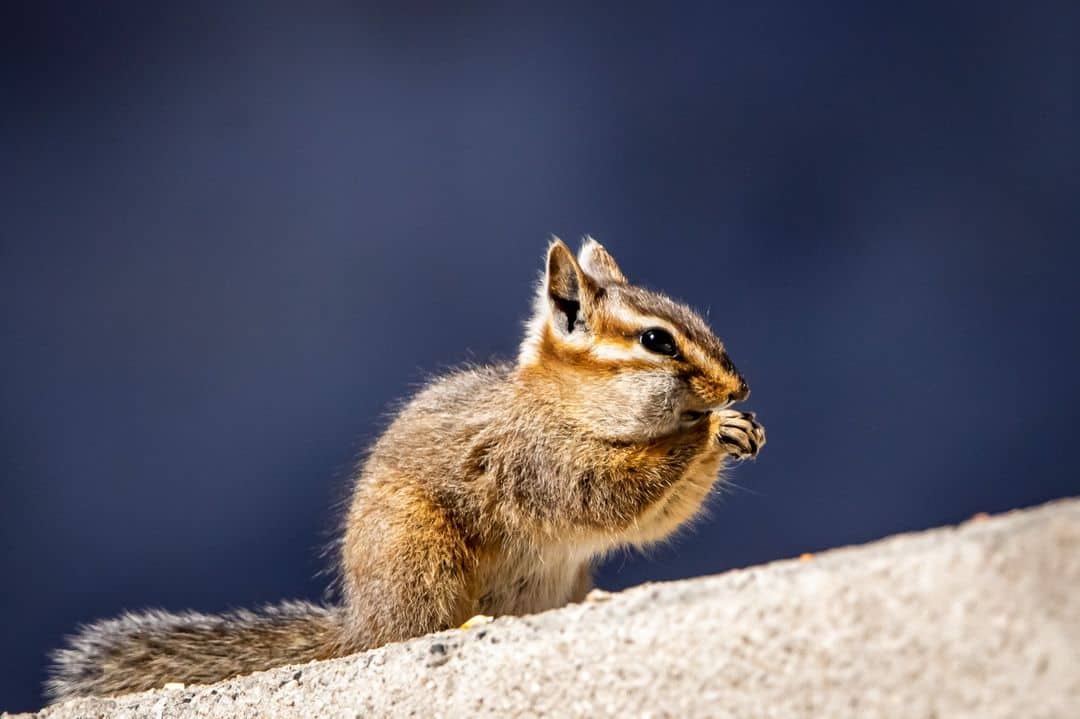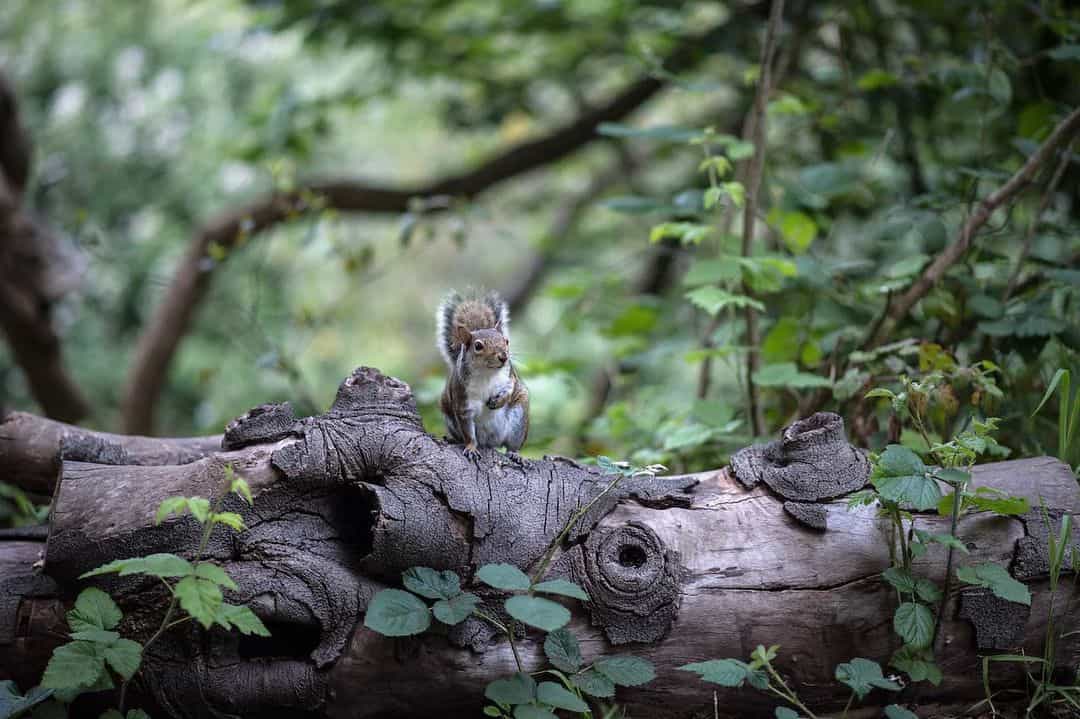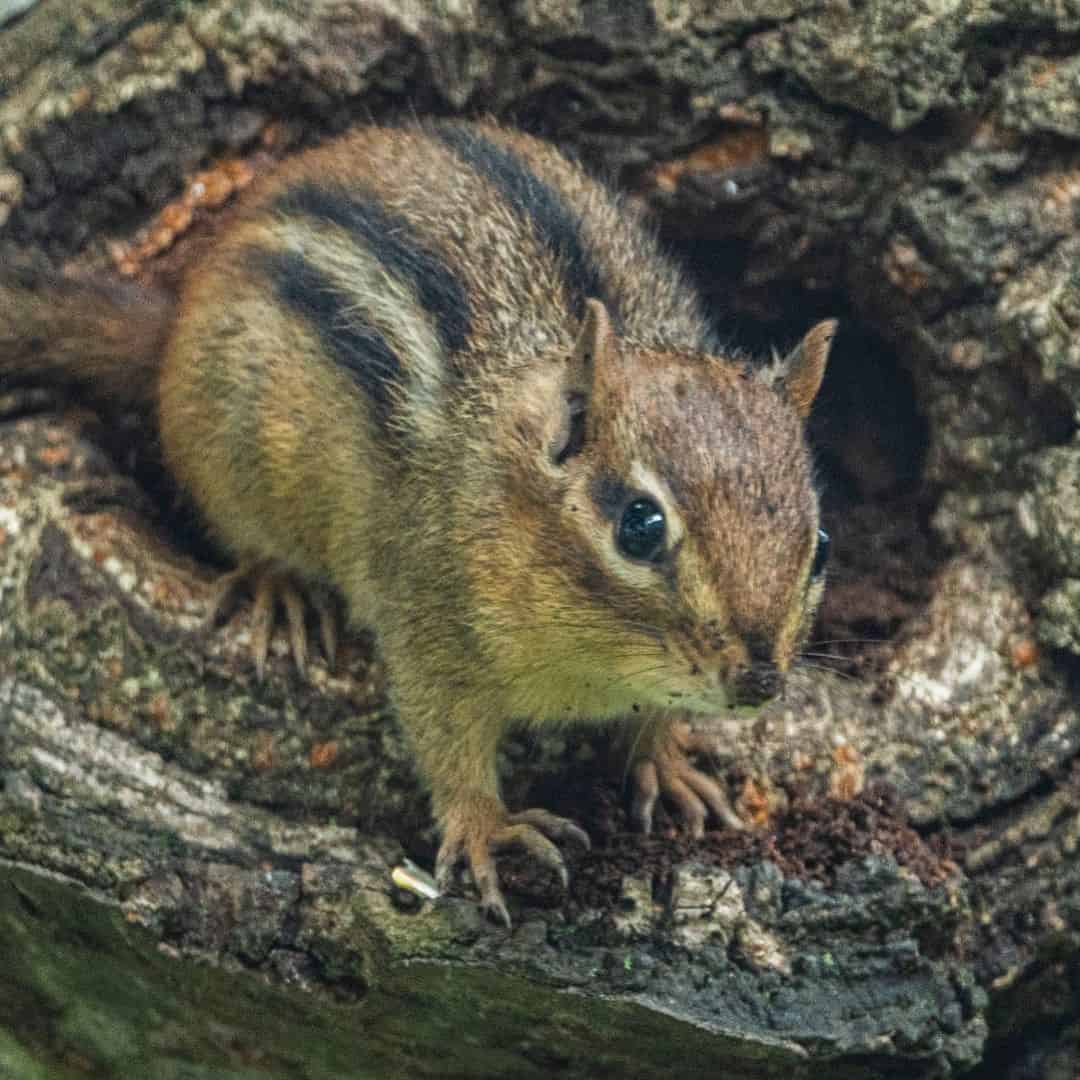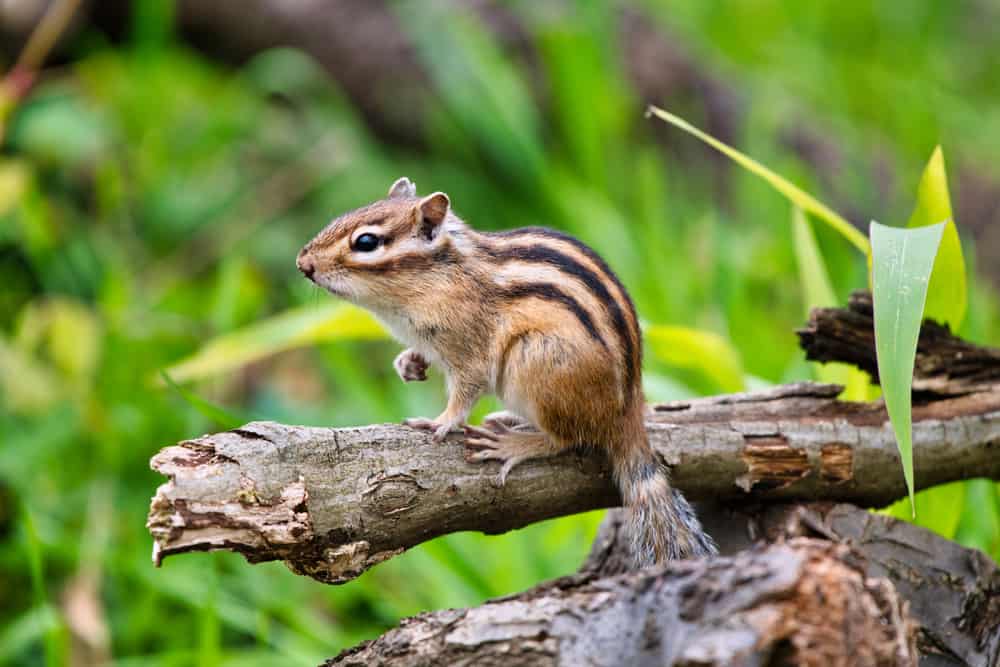If you are not very familiar with chipmunks, you might wonder why anyone should want to learn what chipmunk poop looks like and why anyone would write an article on this subject. You might think it is just one of many trivial and stupid pieces of information that we are constantly bombarded with in these modern times.
But you would be wrong. Chipmunk poop means chipmunk presence, and chipmunk presence can mean trouble. In more than one way. For this reason, we advise you to stay with us until the end of the article.
You will not only learn how to identify their poop but also how to distinguish it from the fecal matter of some other rodents. Equally important, you will find out what are the dangers of chipmunk poop to your pocket and health. And much more!
What Are Chipmunks?

Chipmunks are rodents from the Sciuridae family that live in North America and Asia. Chipmunks are popular as pets since they are lively, cuddly, and social creatures. They also have three stripes on their back, making them extra appealing.
Chipmunks can grow up to 10 inches long (tails are responsible for around half the length) and 3 to 4 inches tall. These tiny critters that weigh between 2 and 5 ounces live five to eight years, with females usually outliving males by several years.
Can Chipmunks Cause Damage To Your Property?
In the introduction part, we said that chipmunk activity could cost you some money. It is time to find out in which ways.
1. House
Let’s start with their habitat, which can cause problems if it is constructed in the wrong place.
Chipmunks are rodents that like to build underground tunnels called burrows since such spots provide them with habitat but also shelter from predators, to whose attacks they are much more vulnerable when outdoors.
If they decide to build burrows near your house, they will most often do it somewhere in your garden, which is usually not a big problem.
However, these small rodents are known to burrow under porches, patios, sidewalks, and stairs, which can cause structural damage to your home in case of a large infestation of chipmunks.
2. Garden
Chipmunks being omnivores, meaning they eat both plant and animal matter, is bad news for flowers, fruits, and vegetables you may grow in your garden. Not only will they eat whatever the plants produce (if they like it, of course), but they will also destroy the plants by digging them up to get to their bulbs and seeds.
3. Food
The last way in which chipmunks can cause material damage that we will mention concerns food that you leave in spots easily accessible to them. Most often, they will pillage bird feeders but will also go for improperly sealed or secured food in other places in your garden or somewhere in your shed, garage, or house.
What Does Chipmunk Poop Look Like?

In addition to chipmunks, many other rodents and types of animals might excrete in or around your house, which is why it is important to learn what chipmunk poop looks like.
When describing chipmunk poop, we will compare it to rat and mouse droppings since people mix these three types of poop a lot. Knowing the difference between them is also helpful because mice and rats are the types of rodents that like to invite themselves to our homes the most often.
Chipmunk vs. Rat Poop
Chipmunk feces are relatively small compared to, for example, rat droppings since the size of their droppings are about 0.4 inches in total. Rat poop can be up to one inch long and thicker than chipmunks’ poop.
When it comes to shape, chipmunk poop is oblong or pellet-shaped but with pointy ends, which is why a lot of people compare its shape to that of a rice grain. On the other hand, rat feces are olive-shaped.
These three features (length, thickness, shape) plus the fact that rat’s poop is almost always black (rats are less choosy when it comes to food) is how you can differentiate between the two.
Chipmunk vs. Mouse Poop
Telling apart chipmunk and mouse poop can get challenging since they have common features such as shape and thickness. Mouse feces are usually smaller, but the difference is not that noticeable unless you are walking around with a magnifier or microscope.
One thing by which you can tell the difference is the color, though. Although both rodents’ poop can be black when it comes to mice, their feces are almost always like that because of their diet preferences.
On the other hand, chipmunks eat at restaurants with somewhat diverse menus, which is why their fecal matter can also be dark or light brown and is usually paler than mice poop.
Where Will You Usually Find Chipmunk Scat?
In addition to living underground, chipmunks mostly defecate inside their burrows at a designated place because they do not want to attract the attention of predators. And not only that, the members of a particular group will all excrete in the same place.
However, their toileting site happens to be outside the burrow. When living near houses, they often choose the basement because it is the safest place in the house. If they are burrowing under your garden, they may go for a sheltered spot in the corner of your garden, shed, or near a bush.
You will rarely find chipmunk droppings inside a house, as houses are places where there is usually some human activity. Still, even that is not out of the question, especially if you have a habit of leaving food around in visible and easily reachable spots.
The latrine site, i.e., droppings’ location, is probably the best way to tell the difference between chipmunk and mouse or rat poop. Rats and mice are known as animals that will unload anywhere, regardless of potential danger, while chipmunks are much more fearful and careful about leaving evidence behind.
What Are The Dangers Of Chipmunk Poop?

Rats and mice have had a bad reputation for a long time because of their “ability” to transmit bacterial and viral diseases to humans.
However, they are not the only rodents that deserve negative publicity because many other owners of sharp front teeth from the order of Rodentia are almost equally capable of these wrongdoings, including chipmunks. You probably would never tell it from their cute appearance, but that is the hard truth.
The diseases and infections can be transmitted to humans directly by touching a chipmunk, getting in contact with its fecal matter, urine, or saliva, getting bitten, or inhaling dust particles or traces left by it.
The indirect infection occurs via ticks, mites, various domesticated animals, or fleas that have been in contact with chipmunks or by them contaminating food and the space in which we move or live.
Some of the bacterial diseases that can be transmitted are leptospirosis, Hantavirus pulmonary syndrome (HPS), salmonellosis, and bubonic plague.
After all this scary information, we believe you are a little worried. However, there is not much reason for that because humans nowadays live in much cleaner and healthier conditions than our ancestors, so the probability of infection is much lower.
But still, let’s not leave anything to chance and learn how to clean up chipmunk poop.
How To Clean Up Chipmunk Poop?
Let’s look at seven easy steps for cleaning chipmunk poop (everything we say here also goes for chipmunk urine).
- Buy a disinfectant or make a homemade disinfectant mixture. To make the homemade version, you can use bleach and water in a ratio of 1 to 10.
- Wear rubber, latex, or vinyl gloves, protective eyewear, and a mask when cleaning chipmunk feces.
- When you start cleaning, it is very important not to cause rising dust by wiping or vacuuming up droppings for the reasons we mentioned earlier.
- Spray disinfectant or the mixture you have prepared on the problematic area so that the sprayed surface will be wet for at least 5 minutes (a commercial disinfectant must be used in accordance with the manufacturer’s instructions).
- Use paper towels or toilet paper to collect feces.
- Throw paper towels or toilet paper containing chipmunk feces in the trash.
- Disinfect everything that may have been in contact with feces.
Conclusion
If you were one of those who considered this topic irrelevant, we hope we have changed your mind. Also, we hope that we have given enough information on this topic for anyone who wants to learn something new.
Before we say goodbye, let’s go over the basics of chipmunk poop – usually around 0.4 inches long, oblong, or pellet-shaped with pointy ends and black or brown.
To differentiate between chipmunk and rat excretions, keep in mind that rat feces are bigger, darker, and olive-shaped. When it comes to the difference between chipmunk and mouse poop, the location is usually the best way to tell them apart – remember – chipmunks will not make a mess just about anywhere. Mice (and rats) will.
Got questions? We are waiting in the comments section!
